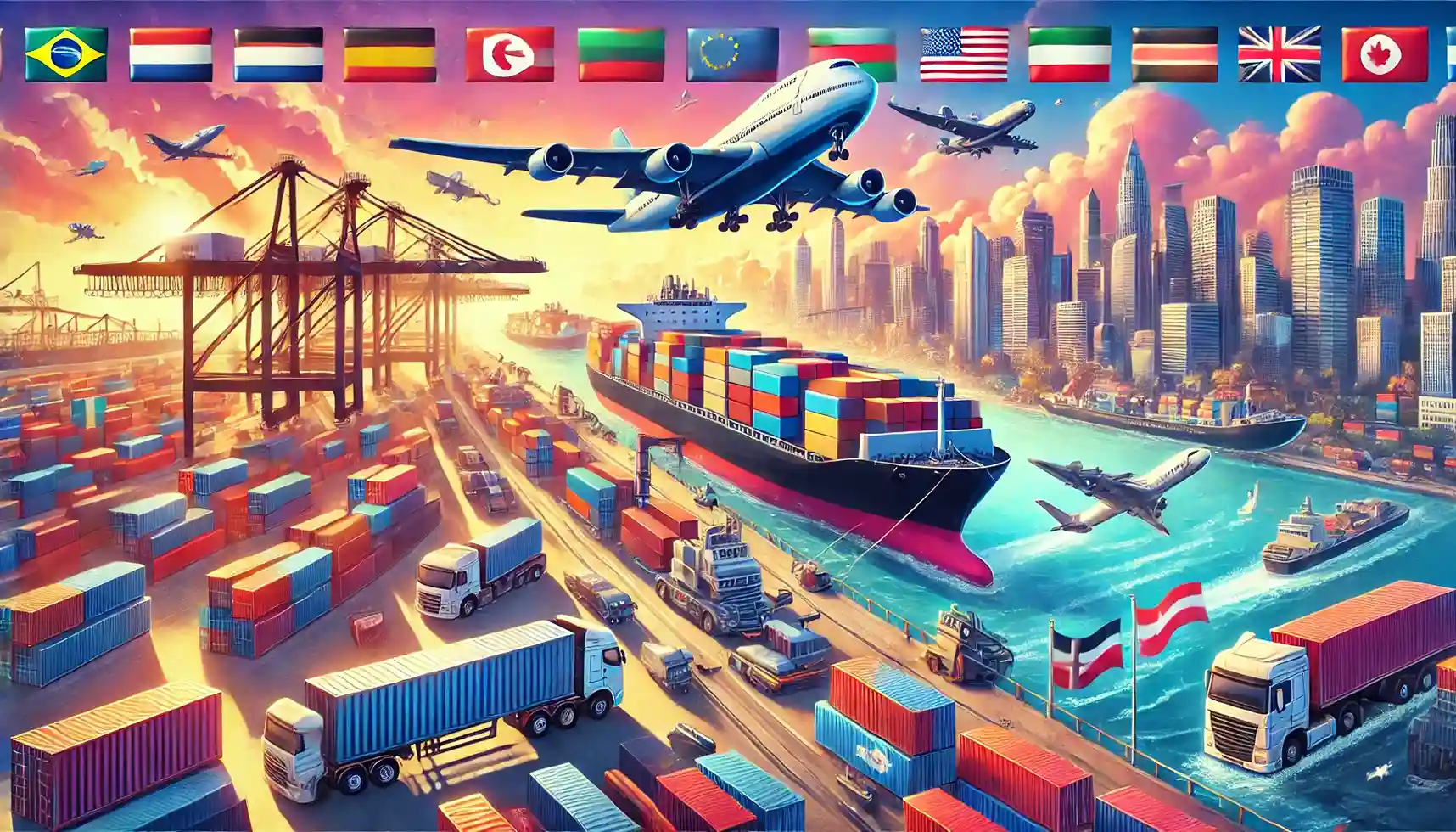Germany’s current account balance is a crucial indicator of the country’s economic health. It measures the flow of goods, services, and investments into and out of the country. But what does it really tell us about the German economy? Let’s take a detailed look at this important economic metric.
What is the Current Account Balance?
The current account balance is like a country’s financial report card. It includes trade in goods and services, income from abroad, and current transfers. Think of it as a comprehensive ledger that tracks all transactions between residents of a country and the rest of the world.

Components of the Current Account
- Trade Balance: The difference between exports and imports of goods and services.
- Net Income: Earnings on investments and wages sent home by workers abroad.
- Current Transfers: Financial transfers that don’t involve purchases, like foreign aid and remittances.
Why is it Important?
A positive current account balance (surplus) indicates that a country is a net lender to the rest of the world. Conversely, a negative balance (deficit) suggests it is a net borrower. For Germany, maintaining a surplus is often seen as a sign of economic strength.
Historical Context of Germany’s Current Account
Germany has consistently run a current account surplus since the early 2000s. This surplus has been a topic of both admiration and controversy. But what factors have contributed to this sustained performance?
Post-Reunification Economic Strategies
After the reunification of East and West Germany in 1990, the country implemented several economic reforms. These reforms, aimed at boosting productivity and competitiveness, have played a significant role in the current account surplus.
Export-Led Growth Model
Germany’s economy heavily relies on exports. The country is known for its high-quality manufacturing sector, especially in automobiles and machinery. This export-oriented approach has significantly contributed to its current account surplus.
Factors Influencing the German Current Account Balance
Several factors influence Germany’s current account balance. These range from domestic policies to global economic conditions. Let’s delve into some of the key drivers.
Strong Industrial Base

Germany’s robust industrial sector, particularly in automobiles, machinery, and chemicals, drives its export success. The reputation of German products for quality and reliability ensures a steady demand worldwide.
Wage Moderation and Labor Market Reforms
Labor market reforms and wage moderation have kept production costs competitive. This has helped German products remain affordable and attractive to foreign buyers, boosting exports.
The Role of the Euro
Germany’s membership in the Eurozone has both advantages and challenges for its current account balance. The euro has provided a stable currency environment, but it also means Germany cannot devalue its currency to boost exports.
Benefits of the Euro
The euro has eliminated exchange rate risks for German exporters within the Eurozone. This stability encourages trade and investment within the region, benefiting Germany’s current account balance.
Challenges of the Euro
However, being part of the Eurozone means Germany cannot independently adjust its monetary policy. In times of economic imbalance, this can limit Germany’s ability to react quickly and effectively.
Trade Relationships and Partners
Germany’s trade relationships are a significant factor in its current account balance. Its main trading partners include the European Union, the United States, and China.
Trade with the EU
As a member of the EU, Germany enjoys free trade with other member countries. This access to a large and affluent market has been a boon for German exports.
Trade with Non-EU Countries

Germany also maintains strong trade relationships with non-EU countries. The United States and China are major markets for German products, contributing to the country’s export-driven current account surplus.
Impact of Global Economic Conditions
Global economic conditions can have a substantial impact on Germany’s current account balance. Factors such as global demand, exchange rates, and international trade policies play crucial roles.
Global Demand for German Exports
Economic growth in key markets like China and the United States boosts demand for German exports. Conversely, economic slowdowns can negatively impact Germany’s current account balance.
Exchange Rate Fluctuations
While the euro provides stability within the Eurozone, fluctuations in its value against other major currencies can affect Germany’s trade balance. A stronger euro can make German exports more expensive and less competitive globally.
Controversies Surrounding Germany’s Current Account Surplus
Germany’s persistent current account surplus has not been without controversy. Critics argue that it can lead to imbalances in the global economy.
Global Imbalances
A significant current account surplus in one country can lead to deficits in others, potentially destabilizing the global economy. Germany has faced criticism from both the European Union and the United States for contributing to these imbalances.
Domestic Implications

Domestically, some argue that the surplus indicates underinvestment in infrastructure and public services. Critics suggest that Germany should increase domestic spending to stimulate both the national and global economies.
Economic Policies and the Current Account
Germany’s economic policies play a crucial role in shaping its current account balance. From fiscal policies to trade agreements, these policies can have far-reaching impacts.
Fiscal Policies
Germany’s conservative fiscal policies, including budget surpluses and low public debt, contribute to economic stability. This stability attracts foreign investment, further boosting the current account balance.
Trade Agreements
Germany’s participation in numerous trade agreements facilitates access to global markets. These agreements help maintain the competitiveness of German exports, supporting the current account surplus.
The Future of Germany’s Current Account Balance
Predicting the future of Germany’s current account balance involves considering various factors, from domestic economic policies to global economic trends.
Potential Shifts in Global Trade
Changes in global trade dynamics, such as shifts towards protectionism or new trade agreements, could impact Germany’s export-driven model. Adapting to these changes will be crucial for maintaining the current account surplus.
Domestic Economic Adjustments

Germany may need to adjust its domestic economic policies to sustain its current account balance. This could involve increased investment in infrastructure, innovation, and education to maintain competitiveness.
Conclusion
Germany’s current account balance is a complex and multifaceted economic indicator. It reflects the country’s economic strategies, industrial strength, and trade relationships. While it has brought economic stability and growth, it also presents challenges and controversies. Understanding the nuances of this balance provides valuable insights into the German economy and its role in the global market.
FAQs
1. What is a current account balance?
The current account balance measures the flow of goods, services, income, and current transfers into and out of a country. It reflects a nation’s economic transactions with the rest of the world.
2. Why does Germany have a current account surplus?
Germany has a current account surplus due to its strong industrial base, competitive export sector, and prudent economic policies. High demand for German goods and services also contributes to this surplus.
3. How does the euro impact Germany’s current account balance?
The euro provides a stable currency environment within the Eurozone, benefiting German exporters. However, it also means Germany cannot independently adjust its monetary policy, which can be a disadvantage in times of economic imbalance.
4. What are the criticisms of Germany’s current account surplus?
Critics argue that Germany’s surplus can lead to global economic imbalances and indicate underinvestment in domestic infrastructure and services. Some suggest that increased domestic spending could stimulate both the national and global economies.
5. What factors could affect the future of Germany’s current account balance?
Global trade dynamics, domestic economic policies, and changes in global demand are key factors. Germany may need to adapt to shifts in global trade and increase domestic investments to sustain its current account surplus.
